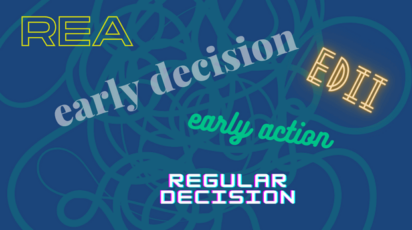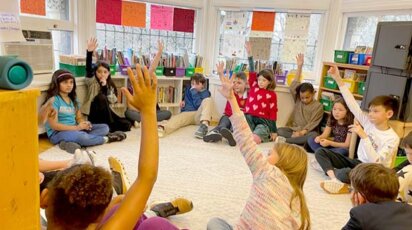News
Students Launch Poly Media + Politics Project Website
As we get closer to November 3, Poly’s students aren’t just learning civics, they are living it. Upper School students are holding voter registration drives, participating in election forums, and the AP U.S. Government and Politics class is taking it one step further with the Poly Media + Politics Project, a new website where they will observe, reflect on, and critique how the media cover American politics.
The website features student-written pieces about how the media has covered major voting blocs and issues related to the 2020 election. Topics include media coverage of: the 65+ demographic; Black voters; Climate Change; COVID; the economy; evangelical voting; immigration; Hispanic/Latinx voters; voting rights; and women and voting. There is also a “What We’re Reading” section, with articles recommended by students.
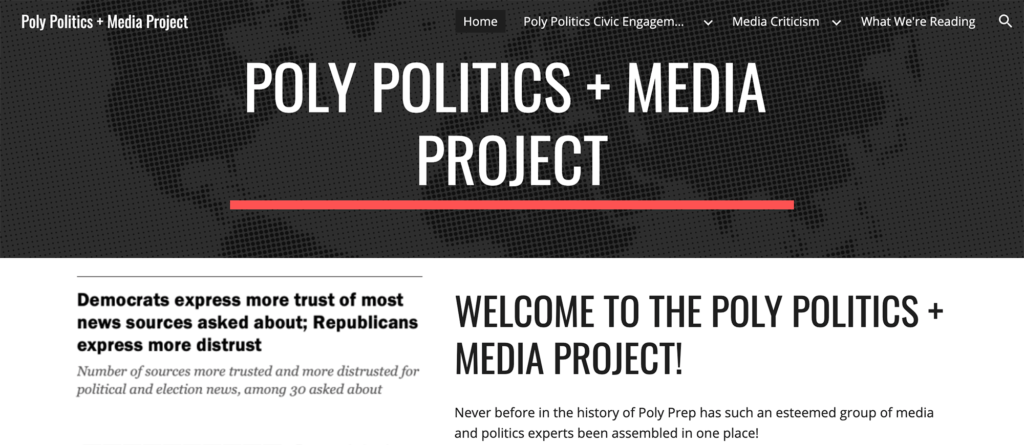
“I am deeply grateful to these students for the time, effort, and engagement they’ve brought to this project,” said Maggie Moslander, History Department Chair.
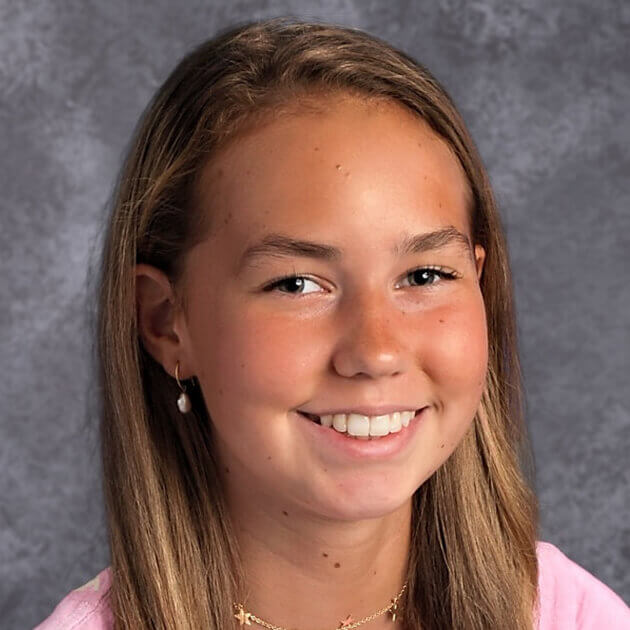
Daisy Neibart ’21, who co-wrote the article “Climate Change Media Criticism,” said she chose as sources, “The New York Times, The Atlantic, and occasionally checked Fox News. Personally, I don’t think that Fox News is a reliable source, but I was trying to get perspective of both sides on the issue.” She added, “Something that surprised me about researching this topic was how little right wing news sources covered this topic.”
Asked if writing the article had changed her outlook about what is a reliable news source, Neibart said, “It confirmed how amazing The New York Times is. It also highlighted how unreliable Fox News is, which barely covered the topic anyway.” She added, “I chose not to look at social media, but it can be a reliable source. However, many social media algorithms promote fake news because people click on it more so it’s important to take everything with a grain of salt.”
“It was surprising to find out that COVID-19 influences the election in so many ways,” said Luke Zimmerman ’21, who co-wrote the article on COVID. “I used Politico, NPR, and The New York Times. I think that my partner used The Washington Post, Real Clear Politics, and The New York Times. I look for sources that are factually based. I also found that there can be variability in perspective within a liberal-leaning source. In order to find multiple perspectives, it is not necessary to use a conservative source and a liberal source.”
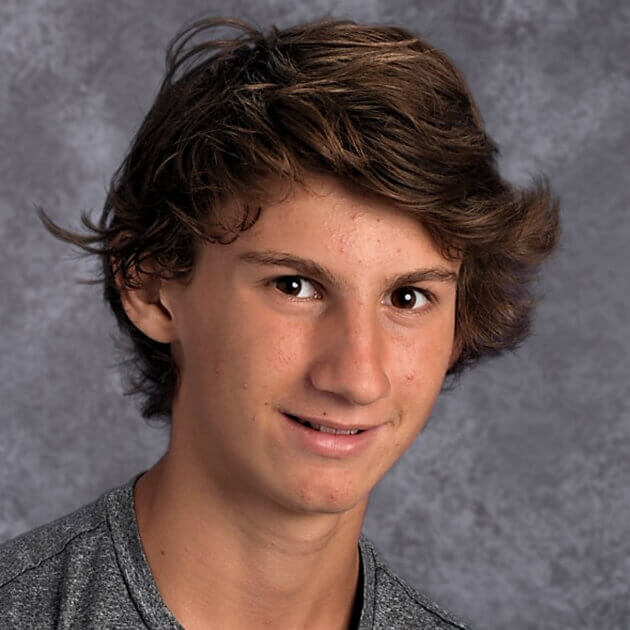
Zimmerman added, “In the present day, the majority of sources are heavily opinionated and meant to advance a certain narrative. This is definitely true about MSNBC, CNN, and especially Fox News. While some of the articles I read did distort evidence in order to criticize or praise a certain candidate, I was happy to find that most articles were factually based, and the more opinionated articles still left facts distinguishable from opinion.”
“Social media is a great and easy way to get news, but it is important to fact-check what is on social media.”
“Social media,” Zimmerman said, “has greatly accelerated the speed at which information and viewpoints spread, which is mostly good, but has also led to rapid spreading of disinformation. Social media is a great and easy way to get news, but it is important to fact-check what is on social media. Social media platforms themselves should also fact-check what is posted, as some already do. One looking for credible news should not go to social media, but it is good that social media allows news to be incorporated into people’s daily lives, as long as that news is fact-checked.”
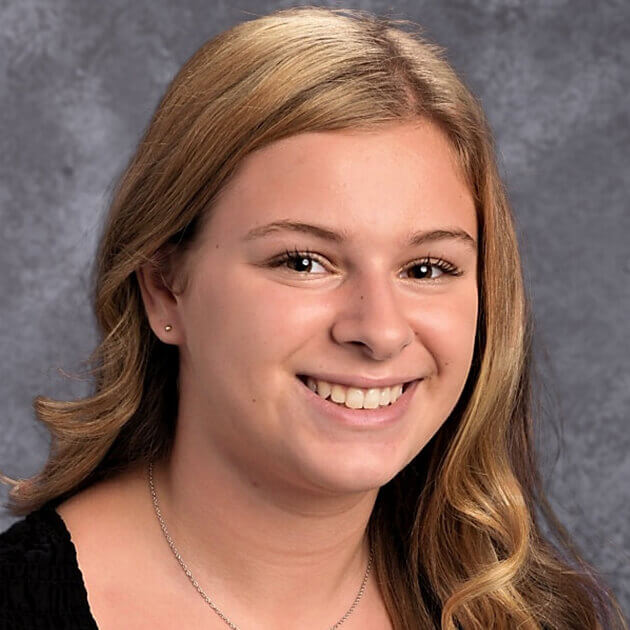
Talia Marash ’21 co-wrote the article on women and the election. “Our initial job,” Marash said, “was to look at the way different news sources tackled this topic, as well as the lenses that they used to talk about this group. Considering that women make up half, if not, more, of the electorate, I was surprised to see the lack of media coverage this demographic received. Across the political spectrum, from liberal to conservative, female voters have been categorized and a lot of their political beliefs have been assumed. I think that after the 2016 election, the last thing we want to do is assume where a certain group will vote, as that will lead to our demise. I noticed that women tended to be talked about as if they were acted upon in the election, but not actors in their own right. So, they would talk about policy that men made, which affected women, but not the ways that women impacted the political sphere. Frankly, I was disappointed in the lack of coverage women received, as I think female political values differ so greatly based on race and socioeconomic status, that it would be important to understand the different ways that this will come out in the election.”
“The initial point of the project,” continued Marash, “was to see the way the media covered a given topic, as well as what ways this would impact the election. When looking at the way women’s issues were covered, I chose to study the Washington Post, FiveThirtyEight, and the National Review because I felt like they covered the political spectrum well.”
“I never really understood how the news that was intended to harm could spread so widely without being checked, but after seeing the lack of information regarding women in the election I was able to understand that fake stories can grow from places where there is no coverage.”
“I have always been very politically involved,” added Marash, who spearheaded voter registration week at Poly, “and part of that education was understanding what makes a reliable news source. I have worked with a group called the Center for News Literacy, based out of Stony Brook University, to understand the ways that news is spread. Essentially, it is broken down into three forms. Malinformation, information spread with the intent to harm; misinformation, blatantly wrong information spread either unknowingly or stemmed from a harmful source; or disinformation, which is also wrong and was created to mislead and deceive. I never really understood how the news that was intended to harm could spread so widely without being checked, but after seeing the lack of information regarding women in the election I was able to understand that fake stories can grow from places where there is no coverage. I have definitely always had an inquisitive eye, but I think this project pushed onto me the importance of making sure the general public is media literate and the benefits that it can have on the voting demographic.”
When asked if she considered social media a news source, Marash responded, “I consider social media a news source with limits. Since it is essentially open to the masses, there must be an understanding that not everyone has good intent in spreading news. It must be looked at with an inquisitive lens, not just to social media, but news as a whole, to understand the motivations and biases that come with an event or topic. I think that social media allows for scandalous topics to grow unchecked, meaning that people do not really have to check for facts before they repost something. This means that it may not always be reliable, but it is always timely. Its greatest strengths are also its greatest weaknesses in that anyone can share their opinions at any time, and there is no real way to corroborate a lot of these claims at the moment.”


